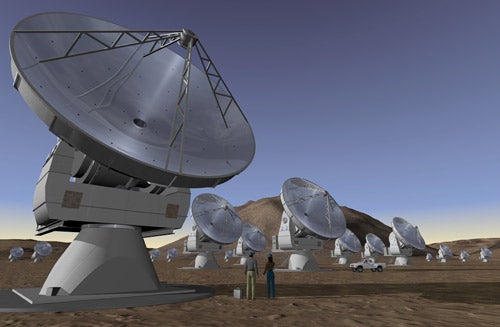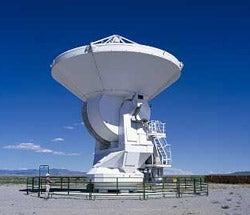The European Organisation for Astronomical Research in the Southern Hemisphere (ESO) is set to supply 25 custom-constructed antennae to the Atacama Large Millimeter Array (ALMA), located at a 16,400-foot-high (5,000 meters) site in Chile’s Atacama Desert.
ALMA is a juggernaut of an instrument. It’s the world’s most sensitive astronomical instrument at millimeter and submillimeter wavelengths — radio waves through infrared radiation. Its sensitivity will be 20 times that of the Very Large Array (VLA) in Socorro, New Mexico. This unsurpassed level of sensitivity will allow ALMA to produce precise images at an angular resolution of 0.1″ as well as additional images at a jaw-dropping 0.01″ resolution.
One goal of this project is to use ALMA’s impressive resolution to study the gravitational collapse of dense molecular gas and dust clouds in order to reveal the detailed mechanics of star formation.
The $176 million (147 million Euros) contract, signed December 6, 2005, at the ESO’s Garching, Germany, headquarters, includes the antennae’s design, manufacture, transport, and on-site integration. The ESO has already built a prototype antenna that has been tested extensively at the ALMA Antenna Test Facility at the VLA site in Socorro, New Mexico.
ALMA is an international partnership between North America, Europe, and Japan, in cooperation with the Republic of Chile.











